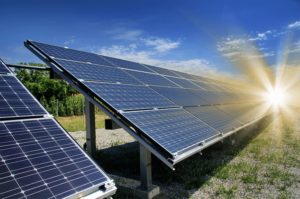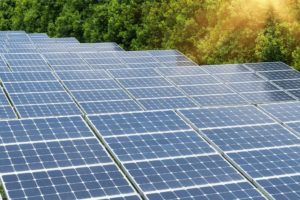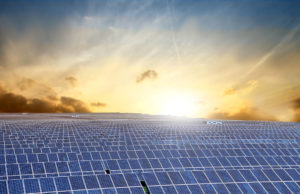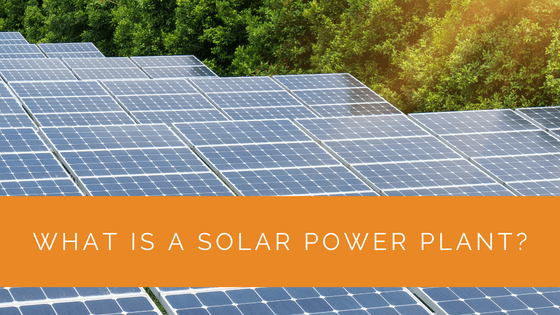You must have noticed a solar panel on every roof to focus sunlight to produce solar energy; now imagine a vast solar power plant with thousands of solar panels that attract tons of direct sunlight to produce massive energy for your comfort.
Sounds promising, right? Solar energy may power homes and businesses because of the sun’s abundant and renewable energy.
You may need to invest money upfront if you establish solar energy. However, it will significantly reduce your energy usage. More significantly, it will lower the level of reliance. That implies you can operate your household without depending on the electricity system in an emergency.
You can use renewable energy to generate power, and the electricity produced could be used for refrigeration, cooking, and other functions.
Sunlight is easily converted into electrical energy by solar power towers. As a result, outages would not be an issue for you. Continue this article to learn more about solar power plants.
Contents
- 1 Key Takeaways
- 2 Solar Power Plant Elements
- 3 How Do Solar Power Plants Work to Generate Electricity?
- 4 Solar Power Plant Types
- 5 Differences Between Solar Thermal and Solar Photovoltaic Power Plants
- 6 Case Study: Optimising Energy Production with Solar Power Plants
- 7 Expert Insights From Our Solar Panel Installers About Solar Power Plants
- 8 Discover the Power of Solar with Solar Panels Network
- 9 Conclusion
Key Takeaways
- Solar power plants harness sunlight to generate abundant, renewable energy for homes and businesses.
- Essential components of a solar power plant include photovoltaic panels, inverters, energy storage devices, charge controllers, and balancing systems.
- Solar power can be used through grid-interactive, off-grid, and hybrid systems, offering power generation and consumption flexibility.
Solar Power Plant Elements
Solar PV panels come in a variety of shapes and sizes. Here is a summary of the essential parts of a solar PV system.
PV (photovoltaic) Panel
PV panels, also known as photovoltaic panels, are a critical element of a photovoltaic system. Solar panel cells make up the structure. This gadget transforms photon energy from the sun into mechanical power.
Inverter
The solar farms’ supply would be like DC. The majority of the load connected to the electrical transmission grid is AC. As a result, we must convert the DC electrical output to AC power. In photovoltaic panels, an inverter is utilised to do this.
Devices that Store Energy
The solar thermal power plants generate power stored in the batteries. The reserve component that collects solar energy is the major element in a power station for meeting requirements and load variability. This element is beneficial when the sun isn’t accessible for several days.
Controller for Charging
A voltage regulator controls the recharging and draining of the battery. The charge controller prevents the battery from being overcharged. High-charging a cell can result in deterioration and a reduction in plate development. In the worst-case scenario, the capacitor’s electrolyte may be damaged.
Component for Balancing the System
It’s a collection of processes that interact to govern, safeguard, and transfer electricity across the system. These components ensure that the equipment functions well and that electricity is directed correctly.
It also guarantees optimum production and the safety of other photovoltaic power components.

How Do Solar Power Plants Work to Generate Electricity?
Solar power is generated utilising solar photovoltaic (PV) equipment, which uses transistors to turn sunlight (solar radiation) into electricity.
Electrons are liberated when you concentrate sunlight on the semiconductors in a PV cell, and bus bars gather the liberated electrons, resulting in an electric charge. When we deliberately position Photovoltaic power in the light from the sun, they produce voltages and currents in the case of Direct current (DC).
However, most gadgets and equipment run on Alternate current (AC), so we must connect all Photovoltaic power to an Inverter, which directly converts DC to AC for household use.
Here are a few solar power systems to power up your homes.
Grid-interactive Solar Power System/On-grid Solar Power System
Use a grid-interactive or on-grid solar power system technology to save money on your power generation bill. Once your house’s power consumption is reduced and solar production is significant, your solar system would then feed the surplus power into the power system corporation.
Solar Power System Off-Grid / Standalone
When there is no power, or the grid is down, this system was implemented as a standby to protect against power outages. Furthermore, in some situations, if a person wants to produce green energy, this is a rechargeable system.
You can use this system to run vital equipment/appliances when the grid is unavailable, or there is no sunlight.
Solar Power System (Hybrid)
This setup is a hybrid to off-grid as well as on solar panels. If your home’s energy use is less than the energy supplied by the solar system, the extra energy will be stored inside the system’s cells.
If the house’s electrical use exceeds the amount generated by the solar panels, the surplus will be met by batteries.
Conversely, if your domestic electricity demand is less than the power provided by solar cells and the cells are ultimately charged, the surplus power is fed back into the grid.

Solar Power Plant Types
Solar energy has primarily been generated using The photovoltaic solar technique and solar thermal energy.
The photovoltaic technology converts sunlight energy directly into electrical energy, whereas the solar thermal technique captures the sun’s heat.
Photovoltaic panels are used to provide power to electronic gadgets. On the other hand, solar thermal collectors are designed to warm your home. Photovoltaic options have the potential to power thousands of hectares of land, and they can generate electricity for power systems.
Let’s look more into these two types of solar power plants.
Photovoltaic Power Plant (Solar PV)
The PV stands for photovoltaic power stations. They use photovoltaic cells to turn sunlight into power. Silicon alloys are used to make these cells. These PV panels come in a variety of shapes and sizes.
Crystalline solar cells and thin-film photovoltaic systems are two prevalent types. PV systems are favoured because they allow solar energy to be stored in batteries. It can also connect to the power network. PV systems will require inverters to convert power from DC to AC.
PV panels are typically made of semiconductor material, as previously stated. When photons from the sun strike a substance, free electrons are produced. The free electrons flowing through the substance will generate a direct electric shock. The DC will be connected to the AC with the help of an inverter before being supplied into the grid.
PV panels are not the same as solar thermal plants. They make use of photographic effects. Thermal plants, on the other hand, utilise liquid heat-carrying methods. PV panels have the advantage of not focusing on energy. Instead, electrons are converted into mechanical energy.
Solar Thermal Power Plant
Photovoltaic systems gather sunlight and convert it into electricity. There are three different varieties of them—for example, Linear Fresnel reflector systems and solar heating parabolic trough systems. The linear collectors, as well as solar dishes, are by far the most frequent. These are often made up of parallel rows.
Solar power plants use sunshine to generate heat. It works in settings below 100 degrees Celsius. Residential and business properties might benefit from the installation.
The convective heat could be used for a variety of industrial applications. Most companies employ the most up-to-date technologies to provide a superior business and domestic applications solution.
Solar thermal power plants transfer energy from the sun to a heat transfer fluid of water, coolant, and air. The liquid will be transferred to the places where it will generate heat.

Differences Between Solar Thermal and Solar Photovoltaic Power Plants
The concentrated sunlight energy source is used across solar thermal power and solar photovoltaic facilities to collect solar energy.
Read the comparison of the two systems in the following section to see which is the superior option for electricity generation without an electrical grid.
Technology
The technique is the most significant distinction between any of these facilities. Solar thermal uses solar energy to heat fluid, liquid or air, depending on the process, while PV facilities depend on the PV effect.
Usage
PV plants get their energy straight from the sun. The heat exchangers will heat the fluid to convey the energy. Heat can power a gas generator, steam power, or similar devices.
The PV systems have a capacity of approximately MW. However, the heating systems’ capacity is even lower than 400 MW. Heating coils are the primary function of a domestic solar thermal plant. On the other hand, Household PV systems start generating DC electricity directly from sunlight.
Case Study: Optimising Energy Production with Solar Power Plants
Background
Solar Panels Network was approached by a commercial client in the UK seeking to significantly reduce their energy costs and environmental impact. The client, a large manufacturing facility, wanted to explore the feasibility of installing a solar power plant to meet their energy needs. Our goal was to design and implement a system that maximised energy production while providing a reliable and sustainable power source.
Project Overview
The project aimed to install a hybrid solar power plant, integrating both photovoltaic (PV) and solar thermal technologies. The PV system was intended to generate electricity for the facility’s operations, while the solar thermal system would be used to provide hot water and heating. The challenge was to ensure that the system was robust enough to meet the facility’s high energy demands, even during peak periods.
Implementation
- Scaffolding Setup: Erected scaffolding around the facility to ensure safe and efficient installation of the solar panels and thermal collectors. Mounting and Installation: Installed high-efficiency monocrystalline PV panels and evacuated tube solar thermal collectors, optimally positioned to capture maximum sunlight throughout the day. System Integration: Integrated the PV panels with the facility’s electrical grid and connected the thermal collectors to the existing hot water and heating systems. Monitoring and Testing: Set up a comprehensive monitoring system to track energy production and consumption, enabling real-time adjustments and optimisations.
Results
- Energy Production: The PV system generated substantial electricity, covering approximately 60% of the facility’s total energy needs. The solar thermal system efficiently provided hot water and heating, further reducing reliance on fossil fuels.
- Cost Savings: The combined systems led to a significant reduction in energy bills, offering a return on investment projected within 5-7 years. The client benefited from government incentives and feed-in tariffs, enhancing the financial viability of the project.
- Environmental Impact: The facility’s carbon footprint was drastically reduced, aligning with their corporate sustainability goals. The hybrid system prevented approximately 1,000 tonnes of CO2 emissions annually.
- System Performance: Even during less sunny periods, the energy storage solutions ensured a consistent and reliable energy supply, demonstrating the system’s resilience and efficiency.
Summary
The installation of a hybrid solar power plant provided the manufacturing facility with a sustainable and cost-effective energy solution. By combining photovoltaic and solar thermal technologies, the client achieved substantial energy savings and a reduced environmental impact. This case study highlights the effectiveness of integrated solar systems in meeting high energy demands while promoting sustainability. The success of this project underscores the potential of solar power plants to revolutionise energy production for commercial enterprises.
Expert Insights From Our Solar Panel Installers About Solar Power Plants
Solar power plants are a game-changer in renewable energy. The key advantage lies in their scalability, which allows for massive energy production that can power entire communities. It’s not just about going green; it’s about energy independence.
Senior Solar Engineer
Choosing between photovoltaic and thermal solar power plants depends largely on the specific needs of a project. PV systems are incredibly versatile and can easily be scaled up, while solar thermal plants are highly efficient for heating applications.
Renewable Energy Consultant
Understanding the different components of a solar power plant is crucial for optimizing performance. From the PV panels to the inverters and energy storage solutions, each element plays a vital role in ensuring efficient and reliable energy production.
Lead Solar Technician
Discover the Power of Solar with Solar Panels Network
Are you navigating the world of solar installations? Look no further than Solar Panels Network, the UK’s trusted partner in harnessing the sun’s potential. Our dedication goes beyond just installations; we’re on a mission to transform how homeowners and businesses across the UK perceive and utilise energy. By choosing us, you’re reducing your carbon footprint and making a smart financial move that promises savings for years ahead. Contact us today and embark on your solar journey.
Conclusion
Utilise this environmentally friendly option without polluting the water or the air. You would not be a part of the global warming problem to produce electricity.
The main advantage of solar power plants is that they will reduce your energy usage and provide you with a significant amount of money.
You now better understand what a photovoltaic cell is and its practical applications.
You’re also familiar with the two most common types of solar panels. PV systems are indeed a good choice if you want a diverse solution. Solar thermal systems are suitable if you need a reliable heat supply in a small area without a national grid.
So, wait no more and invest in the energy that suits your type.
About the Author
Solar Panels Network stands at the forefront of solar energy solutions, driven by a team of seasoned solar engineers and energy consultants. With over decades of experience in delivering high-quality solar installations and maintenance, we are committed to promoting sustainable energy through customer-centric, tailored solutions. Our articles reflect this commitment, crafted collaboratively by experts to provide accurate, up-to-date insights into solar technology, ensuring our readers are well-informed and empowered in their solar energy decisions.

